
Island Rhythms: A Deep Dive into the Unique Vibes of Jamaica and Puerto Rico
The tropical warmth of the Caribbean sun, the gentle caress of turquoise waters, and the vibrant cultural heartbeats of its islands lure millions of visitors every year. Two such captivating Caribbean islands are Jamaica and Puerto Rico. Both are known for their beautiful beaches and rich history, but how do they differ, and where do they converge? Let’s journey to understand the essence of these popular tourist destinations: Jamaica and Puerto Rico.
Understanding Island Gems: Jamaica vs Puerto Rico
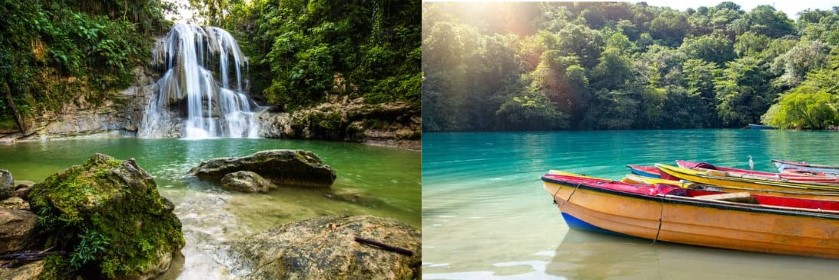
Jamaica and Puerto Rico are popular tourist destinations and living tapestries of culture, history, and natural wonder. The significance of understanding their unique cultures, histories, and contributions cannot be overstated. While Jamaica and Puerto Rico share a Caribbean heritage, their distinct histories, cultures, and socio-economic landscapes offer a rich tapestry of contrasts and similarities.
Geographical Overview
Jamaica: The Heart of the Caribbean Situated south of Cuba, Jamaica is beautiful, rich with lush mountains and stunning beaches stretching for miles. Montego Bay, a major city on the island, boasts an international airport, Norman Manley International Airport, and some of the most pristine beaches in the Caribbean.
Puerto Rico: The Enchanted Isle To the east of the Dominican Republic lies Puerto Rico. San Juan’s bustling capital city is a hotspot for cultural attractions and historic sites. The island boasts a diverse landscape, from its beautiful beaches like Flamenco Beach to the dense tropical forest lining its interior. Luis Muñoz International Airport in San Juan is a popular destination with direct flights from major international locations.
Historical Context
The histories of both Jamaica and Puerto Rico are as deep and blue as their waters. Jamaica, with its roots in African, European, and native cultures, has given the world treasures like Bob Marley and the heart-throbbing beats of reggae. Its past is intertwined with tales of pirates, freedom fighters, and the growth of a Jamaican culture that’s recognized worldwide.
Puerto Rico’s story includes indigenous tribes, Spanish colonizers, and American and Latin cultures mingling. San Juan is a testament to this rich history, with its city museum and historical sites offering glimpses into a past that shaped this Caribbean country.
In the coming sections, we will delve deeper into the nuances that set these two islands apart and discover what makes them uniquely Caribbean.
Island Roots: Indigenous Populations and Colonial Legacies
Jamaica vs Puerto Rico: A Dive into Ancient Civilizations
Long before the sands of the Caribbean islands were graced by tourists, they were home to indigenous populations. In Jamaica, the Arawak people thrived, while in Puerto Rico, the Taíno civilization flourished. These early inhabitants laid the foundation for the islands’ rich culture and traditions.
European Shadows and the Scars of History
Both islands felt the weight of European boots on their shores. The Spanish, drawn by tales of gold and new lands, made their mark on Puerto Rico, intertwining their culture with the Taíno. Meanwhile, Jamaica witnessed both Spanish and later, British colonization, which left an indelible mark on its language, culture, and politics.
The dark shadow of slavery loomed large over both islands. The transatlantic slave trade brought Africans to work on sugar plantations, forever altering the islands’ socio-economic and cultural landscape. The impacts of this era are still evident today in the music, dance, and stories of the islands.
While Jamaica marched on the road to independence, proudly raising its flag in 1962, Puerto Rico chose a different path. Today, it remains a US territory, enjoying commonwealth status. The relationship offers both challenges and opportunities, making Puerto Rico a unique blend of Latin culture and American influences.
Cultural Vibrancy: A Symphony of Sights, Sounds, and Stories
Language and Faith: Echoes of the Past and Present
While English resounds on the streets of major cities like Kingston, in the corners of Jamaica, you’ll hear the rhythmic cadence of Patois. Puerto Rico resonates with the passionate tones of Spanish, but thanks to its association with the US, English is also widely spoken.
Religion plays a central role in shaping the cultural identity of these islands. Jamaica vibrates to the beats of Rastafarian drums, a faith deeply rooted in African traditions and the teachings of Marcus Garvey. In contrast, the church bells in Puerto Rico ring for Catholicism, reflecting its Spanish heritage.
Music: The Heartbeat of the Islands
From the reggae rhythms of Bob Marley to the hip sways of salsa, music tells the tale of these islands. Jamaica has given the world not just reggae but also dancehall, ska, rocksteady, and mento. Meanwhile, Puerto Rico’s musical repertoire boasts salsa, reggaeton, bomba, and plena. These genres, a reflection of their African, European, and indigenous roots, are a testament to their rich history and cultural evolution.
Art, Literature, and the Playgrounds of Sport
Jamaica and Puerto Rico have birthed artists and writers whose works capture the islands’ essence. Their canvases, pages, and stages tell stories of love, conflict, hope, and the Caribbean spirit.
On the sporting front, while Jamaicans sprint ahead, capturing global attention in athletics, Puerto Rico shines in baseball, producing many major league stars.
Celebrations: The Caribbean Spirit Comes Alive
The islands come alive during festival time. Jamaica’s Carnival is a riot of colors, music, and dance, a celebration of its multi-ethnic history. In contrast, the San Sebastian Street Festival in Puerto Rico’s San Juan city is an exhilarating blend of Spanish traditions and modern Puerto Rican culture.
In the midst of the Caribbean, these two islands, with their distinct histories and vibrant cultures, beckon. They stand as testament to the resilience of their people and the richness of their heritage.
Savoring Island Flavors: Jamaica vs. Puerto Rico
Jamaica vs Puerto Rico: A Culinary Journey
Every island has a flavor, a unique culinary stamp that sets it apart. In the Caribbean, this flavor is a spicy, tangy, sweet, and savory mix, telling tales of colonization, trade, and indigenous practices.
Delightful Dishes: A Tale of Two Islands
Imagine sitting on a beach, the golden Jamaican sun warming your skin, and biting into the spicy, smoky goodness of jerk chicken. On the side, there’s ackee & saltfish, Jamaica’s national dish, which reflects its African heritage. Travel a bit east and the flavors change. In Puerto Rico, the rich aroma of mofongo fills the air, a dish made from mashed plantains, meat, and spices. And for those who crave a bit of rice, there’s arroz con gandules, a perfect representation of Puerto Rico’s mix of Spanish and Taíno influences.
Beverages: A Sip of the Islands
Jamaica takes pride in its Blue Mountain Coffee, a rich brew that wakes you up with its intense flavor. And when the night falls, there’s rum, the essence of the Caribbean. On the other hand, Puerto Rico offers a tropical taste with its famous piña colada. And during Christmas, nothing beats the creamy, spiced goodness of coquito.
Street Food: A Taste on the Go
Both islands have a thriving street food culture. From the jerk centers lining Jamaican roads to the alcapurrias stalls in Puerto Rico’s markets, a quick, delicious bite awaits you.
Economic Pulse: Islands on the Global Stage
Major Industries: Pillars of Growth
While the turquoise waters and pristine beaches play a major role in driving tourism in both islands, their economies are more than just holiday destinations. Jamaica thrives on tourism and agriculture, with its lush mountains offering abundant produce and mining, especially bauxite. With its ties to the US, Puerto Rico has developed a robust pharmaceutical industry. MThanksto the many American businesses set up there, manufacturing also plays a significant role. And, of course, the beautiful beaches and historical sites make tourism a major economic player.
Trading Tides: Exports and Partnerships
Jamaica’s exports include its world-renowned coffee, rum, minerals, and sugar. These commodities find their way to countries across the globe, boosting the Jamaican economy. With its strategic location and American connection, Puerto Rico exports pharmaceuticals, electronics, and apparel, among other things. Their key trade partners include the US, the Netherlands, and Japan.
Investing in the Future: Foreign Investment
Foreign investments play a critical role in shaping the economic landscape. Jamaica’s rich culture and resources attract tourism, agriculture, and energy investors. Thanks to its commonwealth status, Puerto Rico sees significant investments from American businesses, especially in the pharmaceutical and manufacturing sectors.
Both islands, Jamaica and Puerto Rico, while sharing a Caribbean bond, chart unique economic courses, each offering a blend of opportunities and challenges.
Tourist Treasures: Jamaica vs. Puerto Rico
Island Wonders: Natural Havens that Mesmerize
The Caribbean islands are adorned with nature’s best gifts. In Jamaica, the Blue Mountains offer a stunning backdrop to many adventures, their misty peaks beckoning hikers and nature lovers. Not far away, the cascading beauty of Dunns River Falls provides a refreshing retreat. Puerto Rico counters with the lush allure of El Yunque Rainforest, the only tropical rainforest in the United States National Forest System, a verdant paradise teeming with unique fauna and flora.
History Frozen in Time: From Pirates to Fortresses
Steeped in tales of pirates and naval battles, Port Royal in Jamaica vividly depicts the Caribbean’s tumultuous past. Puerto Rico offers a journey back in time with Old San Juan, its cobbled streets telling stories of Spanish colonizers, trade, and culture. The imposing Castillo San Felipe del Morro stands as a sentinel, a reminder of Puerto Rico’s strategic importance in the days of yore.
Sun, Sand, and Splendor: Beyond the Usual
Both islands boast many beautiful beaches, each with its unique charm, from the white sand beaches of Montego Bay to the turquoise waters of Flamenco Beach in Puerto Rico. Hidden waterfalls, secluded beaches, and scenic viewpoints dot the landscapes, making every turn an opportunity for discovery.
Current Affairs: Challenges and Choices
Governance: Democracy, Debates, and Decisions
With its stable parliamentary system, Jamaica continues its democratic traditions rooted in the British legacy. Puerto Rico, however, grapples with its identity. This debate oscillates between seeking statehood, cherishing independence, or maintaining the status quo as a commonwealth under the US.
Social Fabric: Issues and Initiatives
While both islands are vibrant, they face pressing social challenges. Crime, especially in certain areas, raises concerns for residents and tourists alike. Education and healthcare accessibility vary, with efforts underway to provide equitable services. Women’s rights and LGBTQ rights are evolving, with activists working tirelessly for more inclusivity and fairness.
Eco Matters: Conserving Caribbean Beauty
From the lush mountains to the pristine beaches, conservation efforts are critical. Both islands work towards balancing tourism with environmental sustainability. The looming threat of climate change and its propensity to cause natural disasters like hurricanes underscores the urgency of these efforts.
In Conclusion: Celebrating Unity in Diversity
Jamaica and Puerto Rico, while separated by water, share a bond that transcends geography. They boast unique histories, vibrant cultures, and distinct socio-economic narratives. Yet, at their core lies a shared resilience, an indomitable spirit that dances to island rhythms. We must celebrate their differences while exploring these islands and cherish the threads that bind them in Caribbean harmony.
Let me know if this section fits your requirements or if any revisions are necessary.
Beyond the Horizon: Dive Deeper into Jamaica and Puerto Rico
For those eager to delve deeper into the rich tapestries of Jamaica and Puerto Rico, a wealth of resources awaits. From literature that captures the soul of these islands to films that visually narrate their stories and albums that resonate with their musical heartbeat, here are some handpicked recommendations:
Books:
Jamaica:
The Dead Yard: A Story of Modern Jamaica by Ian Thomson. This book is a non-fiction account of modern Jamaica, told through the stories of its people. It explores the island’s history, culture, and current challenges, from poverty and crime to political corruption and environmental degradation. The Dead Yard is fascinating and eye-opening for anyone learning about Jamaica.
A Brief History of Seven Killings by Marlon James. This novel tells the story of seven assassination attempts on Bob Marley, set against political violence and social unrest in Jamaica in the 1970s. A Brief History of Seven Killings is a complex and challenging novel. Still, it is also a powerful and unforgettable one. It won the 2015 Man Booker Prize, making James the first black author to win the award.
Puerto Rico:
Puerto Rico: A National History by Luis A. Ferrao. This book provides a comprehensive overview of Puerto Rico’s history, from its pre-Columbian origins to the present. It covers the island’s colonization by Spain, its transfer to the United States, and its current status as a commonwealth. The book is well-researched and informative, and it is a good choice for anyone who wants to learn more about Puerto Rico’s history.
The House on the Lagoon by Rosario Ferré. This novel tells the story of a wealthy Puerto Rican family during the 1950s. The family is torn apart by the political and social changes that are taking place on the island, and the novel explores the themes of identity, family, and colonialism. The House on the Lagoon is a beautifully written novel providing a unique Puerto Rican cultural perspective.
Films:
Jamaica:
The Harder They Come (1972): This is a classic Jamaican film about a young reggae musician trying to make it big in Kingston. It is a gritty and realistic portrayal of Jamaican life and features some of the most iconic reggae music ever.
Rockers (1978): This film celebrates Jamaica’s reggae music scene. It follows the lives of several young musicians as they try to make it in the business. The film features performances by some of the biggest names in reggae, including Burning Spear, Big Youth, and Lee Scratch Perry.
Puerto Rico:
The Rum Diary (2011): This film is based on the semi-autobiographical novel of the same name by Hunter S. Thompson. It tells the story of an American journalist who moved to Puerto Rico in the 1960s to work for a local newspaper. The film stars Johnny Depp, Amber Heard, and Richard Jenkins. The Rum Diary is a visually stunning film that captures the beauty of Puerto Rico. It also provides a glimpse into the island’s culture and history. The film is recommended for those who want to learn about Puerto Rico and its unique way of life.
Mala Mala (2014): This documentary tells the story of nine transgender people in Puerto Rico. The film follows them as they navigate their lives and identities in a society that often discriminates against them.
Mala Mala is a powerful and moving film that gives voice to the transgender community in Puerto Rico. It is an important film that helps to raise awareness of the challenges faced by transgender people.
Albums:
Jamaica:
Funky Kingston by Toots and the Maytals: This album is considered one of the greatest reggae albums ever. It features the hit singles “Pressure Drop” and “Monkey Man,” and it helped to popularize reggae music worldwide.
Catch a Fire by Bob Marley and the Wailers: This album is considered one of the most important albums in reggae history. It was the first reggae album to be released by a major label, and it helped to introduce reggae music to a mainstream audience.
Both of these albums are essential listening for fans of reggae music. They are full of classic songs that celebrate the culture and spirit of Jamaica.
Puerto Rico:
Inevitable by iLe: This album boldly reimagines the bolero, a traditional Puerto Rican genre. Singer Ileana Cabra (iLe) puts her spin on the genre, mixing it with jazz, soul, and electronic music elements. The album is a personal and introspective look at love, loss, and identity.
Dedication to Sylvia Rexach by Miramar: This album is a tribute to Sylvia Rexach, Puerto Rico’s greatest bolero composer. The group Miramar, which consists of former members of the salsa band Bio Ritmo, performs covers of Rexach’s most beloved songs. The album is a beautiful and moving tribute to a musical icon.

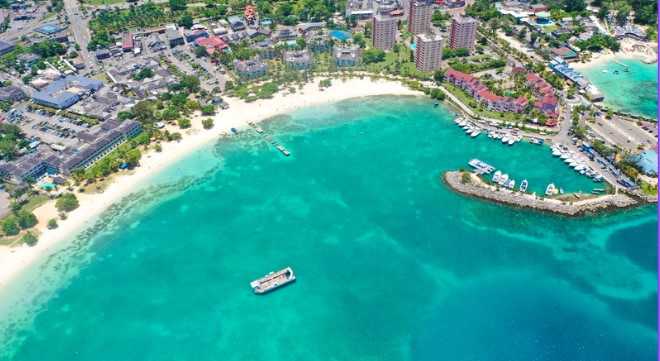
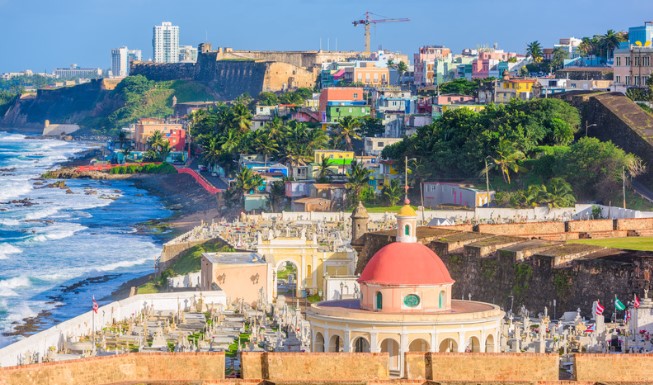
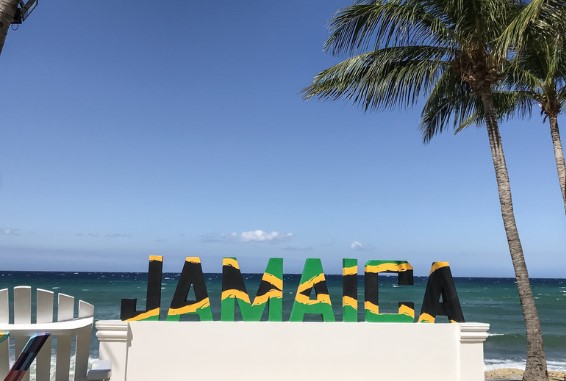


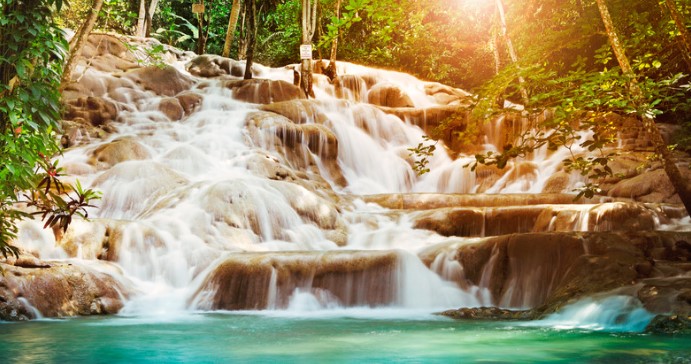
Pingback: Overwater Bungalows Philippines: Tropical Paradise Awaits
Pingback: Ultimate Guide to Golf Cart Rentals Isla Mujeres: Explore